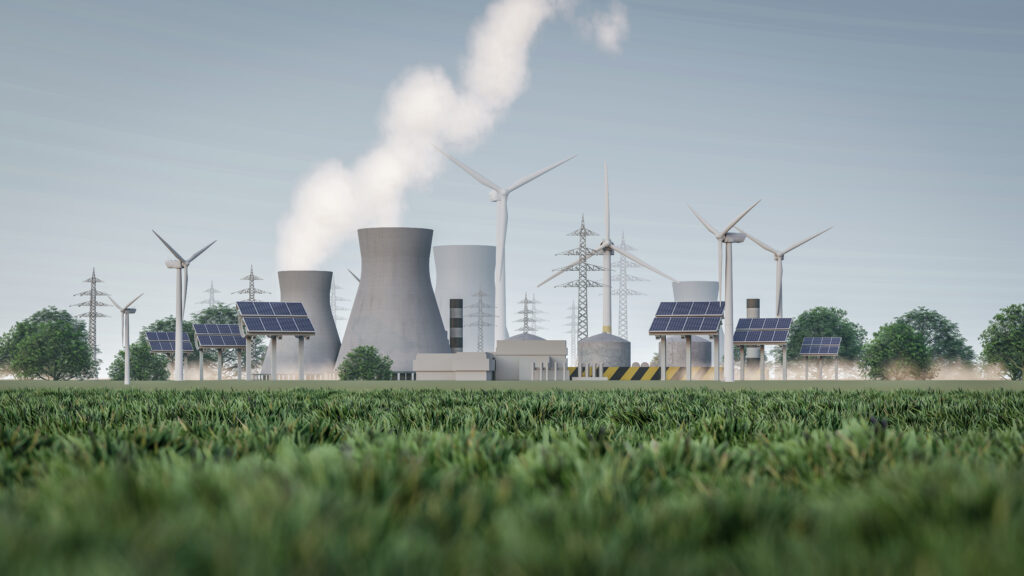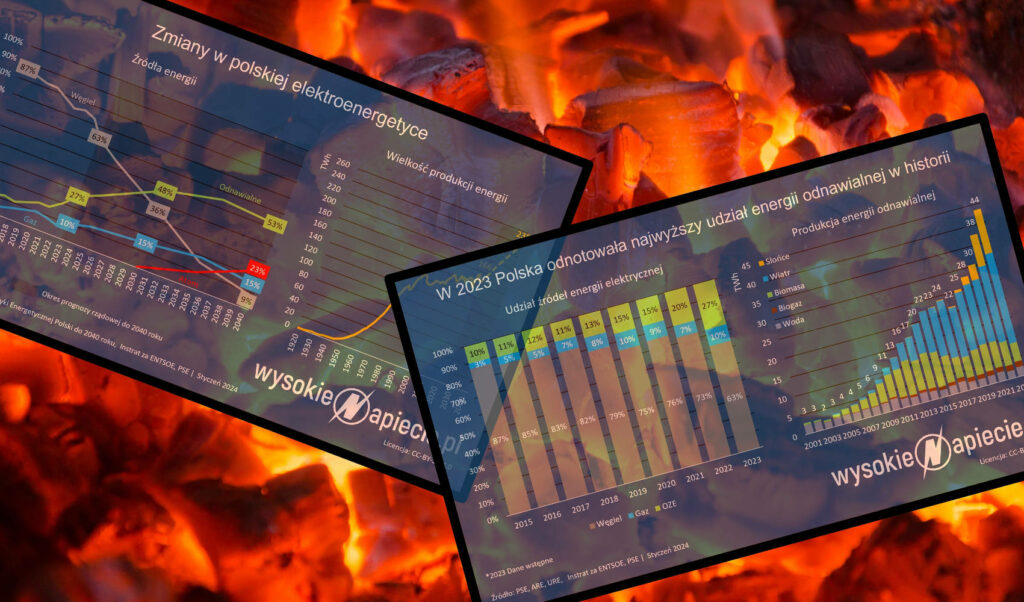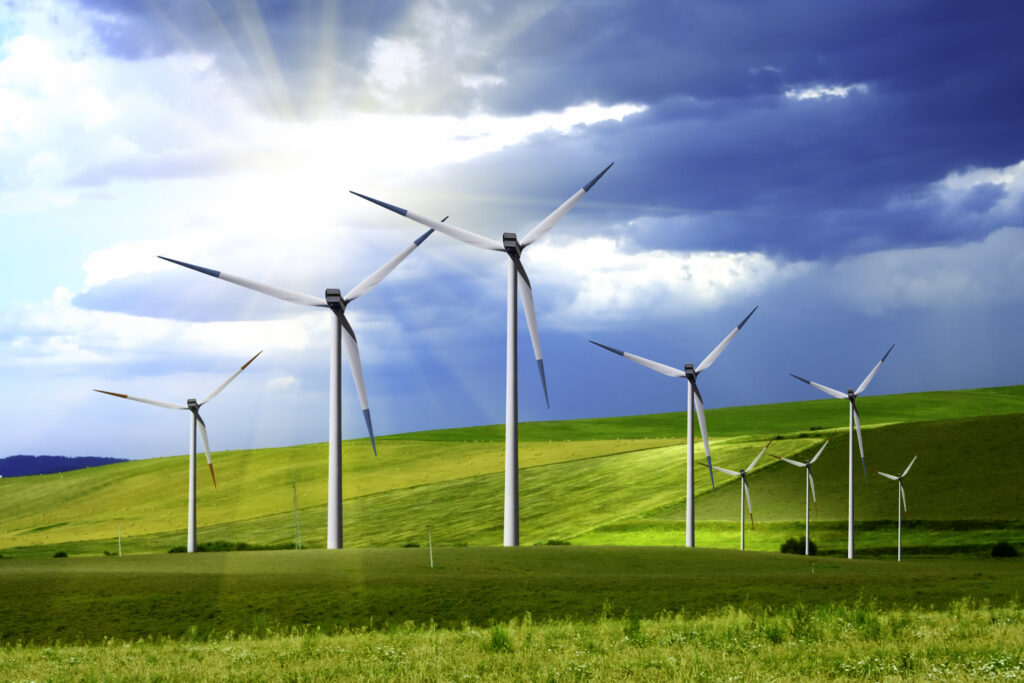Readers may ask – why shouldn’t the government develop such a strategy, since it’s been known for several years what needs to be done. It’s necessary to separate coal power plants from listed companies into separate entities, reach an agreement with banks and the European Commission. One such scenario we described here:
But such a scenario would require presenting the European Commission with a reasonable date for phasing out coal. It will certainly not be the year 2049, as assumed by the agreement negotiated with the mining unions by the PiS government, but something between 2035 and 2040.
If we close coal power plants, state-owned mines will have no one to mine for. Their product on the global market, due to high costs and low quality, is unsellable.
Renegotiating the agreement will not be easy – even if miners themselves can be convinced to close mines earlier with high severance pay, trade unions will resist vehemently and incite the workforce. Closing mines means the end of lucrative union positions, various union-related business deals, and sometimes the collapse of the unions themselves. It’s enough to say that today about half of the income of “Solidarity” from dues comes from miners.
Changing the mine closure schedule to a more rational one would therefore mean the government facing protests from mining unions. Although they have been rather weak lately – in 2021, a few dozen miners went underground and stayed there for a few days – during the pre-election period, they will be highly inconvenient for coalition politicians. So far, no government representative has publicly said that 2049 is a fantasy, though they do not hide it unofficially.
The Minister responsible for mining, Marzena Czarnecka, repeated in December that “mines will operate as long as there are resources in these mines. This is our assurance from the Ministry of Industry.” For what purpose and for whom are these mythical “resources” to be mined?
There’s no one willing to tell the union “fat cats,” as Deputy Head of the Chancellery of the Prime Minister Jakub Jaworowski did in 2014: “stop clowning around.”
We bet that until the presidential elections in 2025, no restructuring plan for coal energy and mining will be implemented.
So what can happen after 2025? Let’s remember that after this date, the capacity market, which still provides coal power plants with significant revenues covering at least part of the fixed costs, will expire. Although the previous government obtained the possibility of extending it for three years, it came with rather stringent conditions.
The profitability of coal power plants is already hanging by a thread today, and the coming years will bring a collapse – fixed costs will rise because wages are rising. The prices of CO2 emission allowances will also rise – already power plants have to buy these certificates for about 60 billion PLN, but only part of this amount goes to the Polish budget. The rest of the power plants have to buy abroad, with only trace amounts from previous years received for free.
In the years 2008-2012, the energy sector received millions of free allowances, sold them, and invested in… new coal power plants. Currently, free allowances are only given to heavy industry, but their pool is continuously decreasing.
After 2025, there will be statutory grounds for the bankruptcy of at least some of the four coal “daughters” of energy groups – PGE Mining and Conventional Energy (including Bełchatów and Turów power plants), Tauron Generation (including Jaworzno and Łagisza), Enea Generation (Kozienice) and Enea Połaniec.
But these companies employ tens of thousands of people, and coal power plants will still be necessary in the energy system for at least another ten years.
The boards of energy groups and the government will face a dilemma that EC Będzin is currently grappling with, specifically its subsidiary. This small, privately-owned, controlled by a group of Polish entrepreneurs, CHP plant decided on a rather radical solution – it stopped buying CO2 emission allowances.
Reading the financial reports of this company tells us about the dilemmas faced by the management, worthy of Shakespeare’s Hamlet, although unfortunately described in dry, accounting language. The company admits that it “did not fulfill (except for a small extent) the non-monetary liability of redeeming emission allowances.” But since no one effectively enforced this, this fact does not directly affect the ability to meet its financial liabilities.
Although the management “declares readiness and willingness to fulfill obligations resulting from the CO2 emissions trading system, but – as we read further – ensuring heat supply is linked to energy security and social responsibility.” Therefore, the company “in the first place has an obligation to ensure the continuity of the energy infrastructure operation.”
The management thus implies that when faced with the choice of buying emission allowances for several tens of millions of PLN, which would threaten liquidity, and improving the financial situation by not buying – they chose the latter. In the management’s opinion, the order of priority is logically, economically, and socially justified.
The government will write off the penalty…
This is not the place for a detailed analysis of why EC Będzin became a hero akin to an ancient tragedy and whether the management is not explaining away some of its mistakes. We also abstract from the company’s stock market ups and downs.
What’s more important is something else – EC Będzin stopped buying allowances in 2020. In total, the value of unbought allowances and the penalties for not redeeming them (100 euros per allowance) exceeds 600 million PLN, with revenues of 320 million PLN.
And what? And nothing happened. Administration in Poland is slow. The decision of the Provincial Inspectorate for Environmental Protection imposing a penalty on the company (100 euros for each unbought allowance), which does not exempt it from the obligation to buy, was issued in December 2023. It covers allowances that should have been bought in 2020. The company appealed to the court.
But the company exists, did not declare bankruptcy, and even assures that the continuation of its activities is not threatened, because the final decision in the proceedings for 2020 is still a long way off. And even if the decision is issued, the administration can write off the penalty or spread it out in installments – the management winks to shareholders in the report.
So, it’s a free-for-all… actually, there is hell somewhere, but a lot of water will flow in Będzin’s Przemsza River before the tax collectors knock on the CHP plant’s doors. And during this time, a lot can happen.
We don’t have your coat, so what will you do?
Now we return to the dilemma facing the boards of energy companies in 2025. Is the above scenario possible for the entire coal energy sector?
At first glance, no – what passes for a small CHP plant would cause a huge scandal for Bełchatów or Turów. But the boards, facing the loss of liquidity, should file for bankruptcy. Without an agreement with the government, they obviously won’t do that. The government will have a choice – either inject more cash into coal power plants and risk a conflict with the EU or decide on a radical restructuring, which in practice means the bankruptcy of coal subsidiaries.
This can be done through a special law (on specific rules for the bankruptcy of coal power plants), similar to what was done with shipyards. The difference will be that the shipyards’ assets were sold, while here the role of the quasi-receiver will be to manage the bankrupt power plants until they are no longer needed in the system, and PSE agrees to their closure.
The formal bankruptcy of PGE GiEK SA, Tauron Generation, and Enea subsidiaries allows their listed “mothers” to straighten out.
The receiver will pay salaries with the possible help of the Guaranteed Employee Benefits Fund, but this will still not be enough to cover fixed costs. Variable costs, i.e., coal and CO2 emission allowances, should be covered by electricity sales on the market, but the chances are slim. If our coal power plants operate about 1600 hours a year in 2030 (as German coal plants do today), emission allowances will cost above 100 euros, and the government wants to maintain low energy prices, fixed costs will have to be covered by variable costs. The blanket will prove too short – the manager will face a dilemma similar to EC Będzin and make a similar decision. Maybe not on such a scale as in Będzin, e.g., buying half the allowances, depending on the financial situation.
Perhaps the law will give him some special absolution, but formally it will not matter – the company will still be bankrupt, so how can the State Treasury enforce its dues? After all, it won’t sell the boilers for scrap as long as they are needed.
Moreover, considering the pace of decision-making by environmental protection authorities, by the time decisions are issued, court complaints considered, appeals upheld, we will calmly wake up in the year 2035. And then most of the power plants will no longer be needed.
There is, however, one “but” in this entire construct. The bankruptcy of power plants within listed energy groups will be a solid shock for the banks that finance these groups today. Coal assets are currently collateral for loans. We spoke with several bankers on this matter. “Negotiations will probably take many months, enriching lawyers and consultants, but ultimately the chances of banks declaring loans due (so-called default) are small,” they reassure.
The only hope is the European Bank for Reconstruction and Development and the European Investment Bank (among others), which do not engage in coal financing today, and the banks’ heads know this perfectly well. Replacing financing from European funds, which the EIB and EBRD do, with new funds from commercial banks is difficult and costly. Even a slight change in the risk assessment of Polish banks can cause problems.
Therefore, a coalition politician will announce this plan as the last option, and now we will watch further episodes of the series “The Tragic Death of Polish Coal Power Plants.” The drama may be long and devoid of sudden twists, but the ending is already known.












